This is a drawing of the evolution of the interior of a giant planet.
Click on image for full size
Image from: The New Solar System
How the Interior of Uranus Formed
The drawing shows a possible history of the inside of giant planets.
As the planets drew material from the solar cloud, bits of heavy rock collected inside the forming planet, as shown in figure A.
Once the planet finished forming, these heavy bits of rock fell into the middle of the planet, as illustrated in figure B.
As shown in the picture, the gas part of the planet is much bigger than the rocky part. That is because the amount of gas and ice which came to Uranus in the beginning depended upon where Uranus was in the original solar cloud.
Eventually, the heavy, rocky material at the center became a core, as illustrated in figure C.
Leftover heat from this process of Uranus' forming may still influence the motions in Uranus' atmosphere.
You might also be interested in:
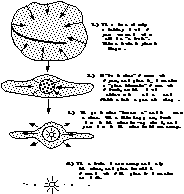
Scientists think that the solar system formed out of a spinning cloud of hydrogen and helium gas. Because the cloud was spinning, it flattened into a frisbee shape, just like a ball of pizza dough becomes
...more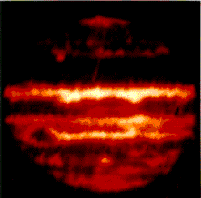
The picture shows places on Jupiter which are hot. Jupiter is a very warm body in space, as shown in the picture, and this warmth is associated with the energy of Jupiter. When the energy of the outer
...more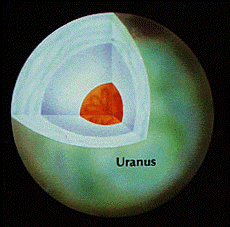
The Giant planets do not have the same layered structure that the earthlike planets do. Their evolution was quite different than that of the earthlike planets, and they have much more gas and ice inside.
...more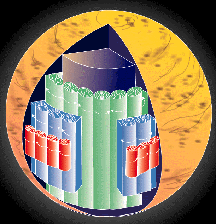
Motions in the interior of a gas-giant planet such as Uranus may be very different from the motions within the Earth. A second idea for the motions in the interior of a gas-giant planet is shown in this
...more
Motions in the interior of a planet help carry heat from the inside to the outside. The drawing to the left illustrates the kind of movements that happen in interior of a planet. Material rises from the
...more
The giant planets have definitely changed since their formation. But how much remains to be seen. Most of the original air of the giant planets remains in place. (The earth-like planets lost most of their
...more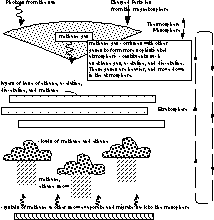
Uranus' atmosphere is made of methane, a medium sized molecule. At the uppermost reaches of the atmosphere, methane gas breaks apart due to energy from the sun and from the magnetosphere. The remins of
...more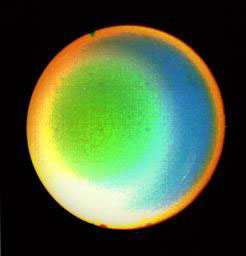
Motions of air in the atmosphere include wind. The major winds in the Uranian atmosphere are zonal winds, which have zones blowing west and belts flowing east. Motion of air in the atmosphere can also
...more














